The Early Registration Day generally aims to achieve the Millennium Development Goal (MDG) on Universalization of Primary (Basic) Education and the objectives of the Education for All (EFA). Specifically, this activity has the following objectives:
UPDATES: DepEd Enhanced Basic Education Enrollment Form for SY 2022-2023
a. For incoming Kindergarten and Grade 1 – to ensure that all five years old and six years old children are enrolled for School Year (SY) 2014-2015;
b. For out-of-school children (OSC) and out-of-school youth (OSY) from disadvantaged groups of indigenous peoples (IPs); street children from 5 to 18 years old; and, adults between 18 to 30 years old – to guarantee their enrollment in their preferred education delivery system, either formal through alternative delivery mode (ADM) or alternative learning system (ALS);
c. For OSC and OSY with disabilities from 5 to 18 years old – to provide them with appropriate education interventions and to establish their census;
d. For the different levels (central, regional, division) of the DepEd – to prepare the Three-Year Catch-Up Plan in Basic Education from SY 2014-2015 to SY 2016-2017 in order to accommodate the registered learners;
e. For the DepEd, in collaboration with the local government units (LGUs), barangay officials, parent-teacher associations (PTAs), civil society/civic organizations and business sector, among others – to make the necessary preparation and to address potential resource needs in time for the opening of classes in June; and
f. For schools – to support schools in their efforts to provide education interventions to prevent pupils and students from dropping out from school.
An advocacy campaign shall be undertaken to encourage the most number of parents to come out for the early registration. Regional and Division Communications Teams shall lead local campaigns supported by schools, parents, local and barangay officials and other stakeholders. They shall be guided by the Communications Unit from the Central Office (CO) in preparing advocacy materials that will be made available to other DepEd Offices.
The registration process shall include the following activities and the details of which are contained in Enclosure No. 1.
- Child or Youth Find Activities
- Early Registration Day in All Public Schools
- School Submission and Coordination of Registration Data
- Planning to Address Resource Gaps and Implementation of Different Program Interventions
Expenses related to the Early Registration Day shall be charged to OSec Funds or Local Funds, as appropriate and as authorized and subject to existing accounting and auditing rules and regulations.
For inquiries about the early registration, all concerned may contact the Early Registration Help Desk at any of these telephone nos: (02) 636-6547 or (02) 636-4879, or send a message through e-mail: earlvreg2014@gmail.com.
April 03, 2018 Update: DepEd Basic Education Enrollment Policy
Table of Contents
Early Registration Day in All Public Schools:
1. Age Qualifications for Grade 1
a. All children who are born on October 31, 2009 or earlier shall be eligible for early enrolment in Kindergarten.
b. Those who are bom on October 31, 2008 or earlier, with or without Kindergarten experience, shall be eligible for early enrolment in Grade 1.
2. Documentary Requirements:
a. The birth certificate of the child shall be the documentary basis for early registration.
b. If not available during the Early Registration Day, the document can be submitted earlier in June or within the school year.
3. Elementary and high school officials shall identify the Registration Centers (RCs) in the school premises.
a. There should be at least four RCs at the elementary level: 1) RC to manage enrolment of Kindergarten students; (2) RC to manage enrolment of Grade 1 students; (3) RC to be handled by teachers who will register OSC in Grades 2 to 3; and (3) RC to be handled by teachers who will register OSC in Grades 4 to 6.
b. At the secondary level, there should be four RCs, that is, one RC per year level: (1) RC to be manned by teachers who will register OSY in Grade 7; (2) RC to be manned by teachers who will
handle the registration of OSY in Grade 8; (3) RC to be manned by teachers who will handle the registration of OSY in Grade 9; and (4) RC to be manned by teachers to handle the registration of OSY in Year IV. Other teachers shall provide support to the early enrollees.
4. Each division office shall identify areas without schools but may have enrolees, and the SDS shall designate the District Supervisor to work with the concerned Barangay Chairperson so that the Early Registration Day can be done in the barangay hall. Likewise, on-site registration of street children who were identified during the street visits shall be conducted by the DOs.
Registration of Out-of-School Children and Out-of-School Youth (OSC and OSY)
1. The Division Supervisor who is in-charge of Special Education (SPED), shall facilitate the overall planning and implementation of the registration process. He/She shall plan with SPED Centers and trained SPED teachers, together, with health personnel, on their specific roles in the registration process:
a. Conduct an orientation on the screening and identification of children and youth with disabilities in regular schools without SPED programs;
b. Network with organizations/associations of people with disabilities (PWDs) or those working for PWDs, including government agencies, which can provide assistance to regular schools; and
c. Prepare a deployment schedule of SPED teachers, health personnel, and the NGO, PWD volunteers during the Early Registration Day.
2. SPED Centers, trained SPED teachers assigned to regular schools, and all health personnel will assist in locating children and youth with disabilities, from 5 to 18 years old, who have not been to school.
3. Learners who have dropped out from elementary or secondary schools and who want to be enroled in the formal system through the Alternative Delivery Mode (ADM), such as the Modified In-School and Off-School Approach (MISOSA), electronic Instructional Management by Parents, Community and Teachers (eIMPACT) and learners enroled/registered in the Dropout Reduction Program (DORP) or in the Alternative Learning System (ALS) shall present their report card to the Teacher-in-Charge of the registration. If the report card is not available, a certification letter signed by the parent/guardian can be presented.
4. A SPED-trained personnel, a health personnel, an NGO/PWD volunteer or regular teacher shall be assigned in each school to fill up the column Category of C/Y with Disability. They shall use the following for the screening and identification of children and youth with disabilities, who shall be registered in schools:
a. Children/Youth with Visual Impairment. These children/youth have difficulty in seeing, even with the use of eye glasses for correction, adeversely affects their academic performance of the blind and low- vision learners. With the use of the E or Snellen chart, those who are blind have a visual acuity of 20/200 or 6/60 or less in the better eye, while those with low vision have a visual acuity of less than 20/60 or 6/18 in the better eye.
b. Children/Youth with Hearing Impairment: These children/youth are deaf and hard-of-hearing. Those who are deaf have a severe hearing impairment that their hearing is non-functional for ordinary purposes in life, while those who are hard-of-hearing have a mild hearing impairment that allows learning without greater difficulty to communicate.
c. Children/Youth with Intellectual Disability. These children/youth have significantly sub-average general intellectual functioning, existing concurrently with deficits in adaptive behavior.
d. Children /Youth with Learning Disability. These children/youth have a disorder in one or more of the basic psycological processes involved in understanding or using language, spoken or written, which may manifest in the an imperfect ability to listen, think, speak, read, write, spell, or do mathematical calculations.
e. Children/Youth with Speech/Language Impairment. These children/youth who have communication disorder such as stuttering, impaired articulation, a language impairment, or a voice impairment.
f. Children/Youth with Serious Emotional Disturbance. These children/youth have a difficulty in building Satisfactory interpersonal relationships; respond inappropriately behaviorally or emotionally under normal cirscumstances; demonstrate pervasive mood of unhappiness; or have the tendency to develop physical symptoms of fears.
g. Children/Youth with Autism. These children/youth have developmental disabilities that significantly affect verbal and non¬verbal communication and social interaction which are generally evident before age three.
h. Children/Youth with Orthopedic Impairment. These children/ youth have physical disabilities, permanent or temporary, which can be paralysis, stiffness or lack of motor coordination of bones, muscles or joints, which results in the difficulty to move.
i. Children/Youth with Special Health Problems. These children/ youth have limited strength, vitality, or alertness due to chronic or acute health problems.
j. Children/Youth with Multiple Disabilities. These children/youth manifest two or more disabilities. Those who manifest two or more disabilities (mental retardation and blindness, etc.), the combination of which requires special accommodation for maximum learning.
2018 BASIC EDUCATIONAL ENROLLMENT FORM
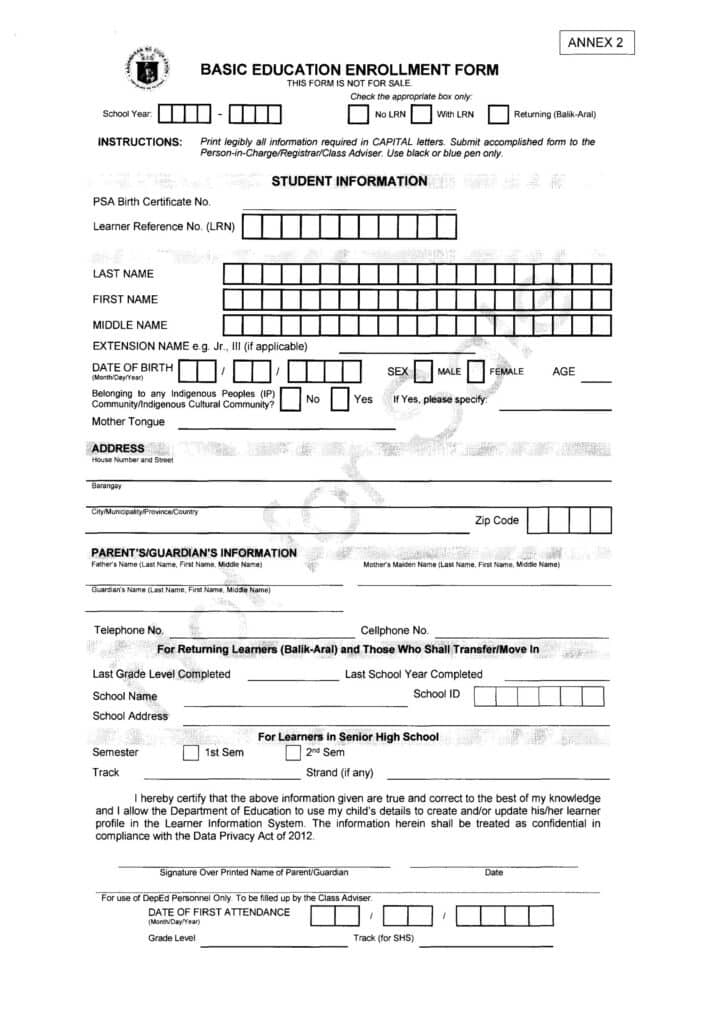
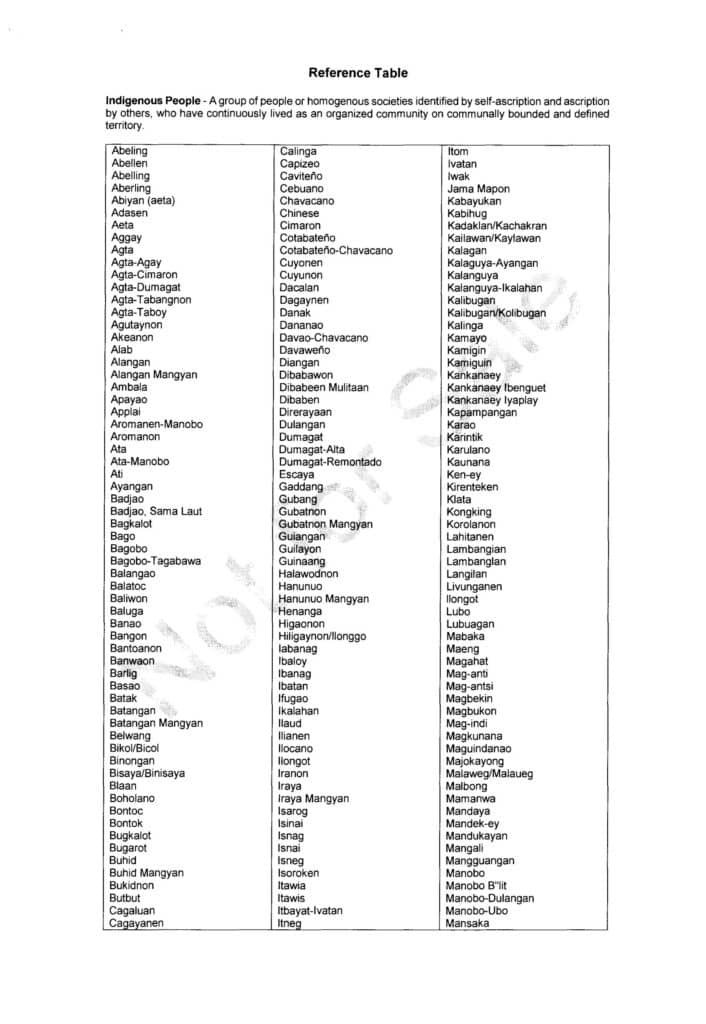
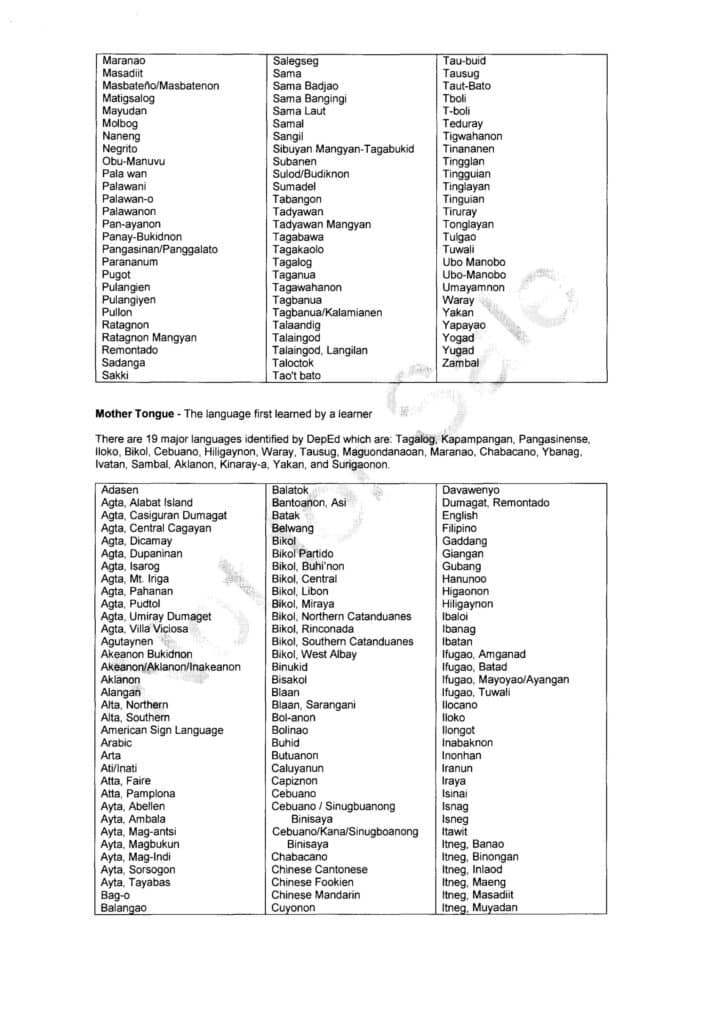
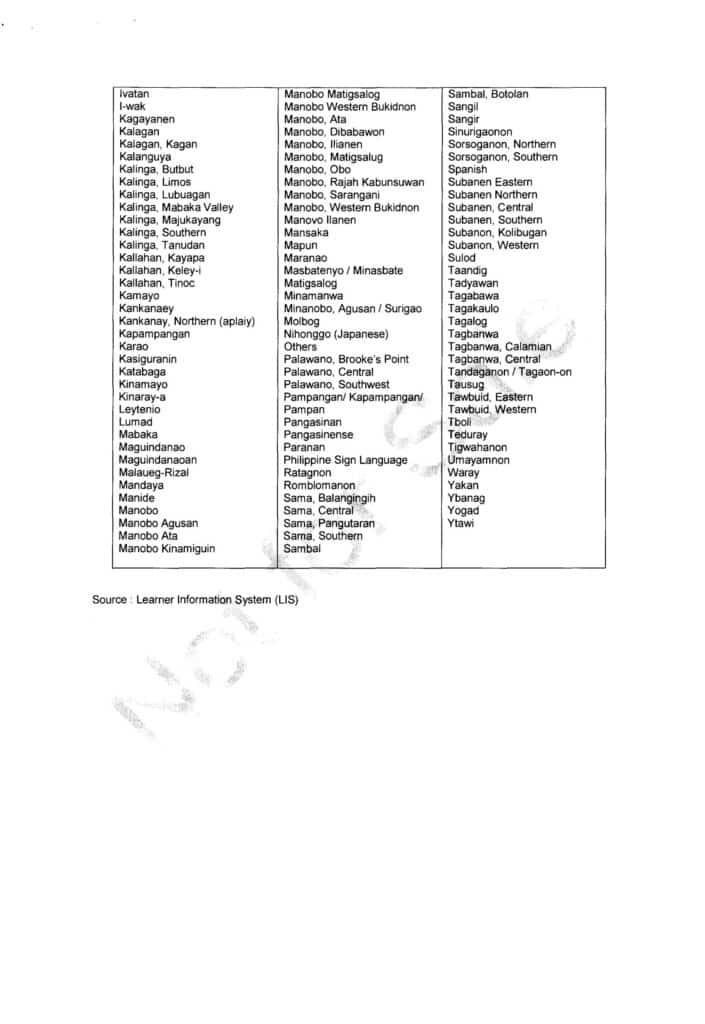
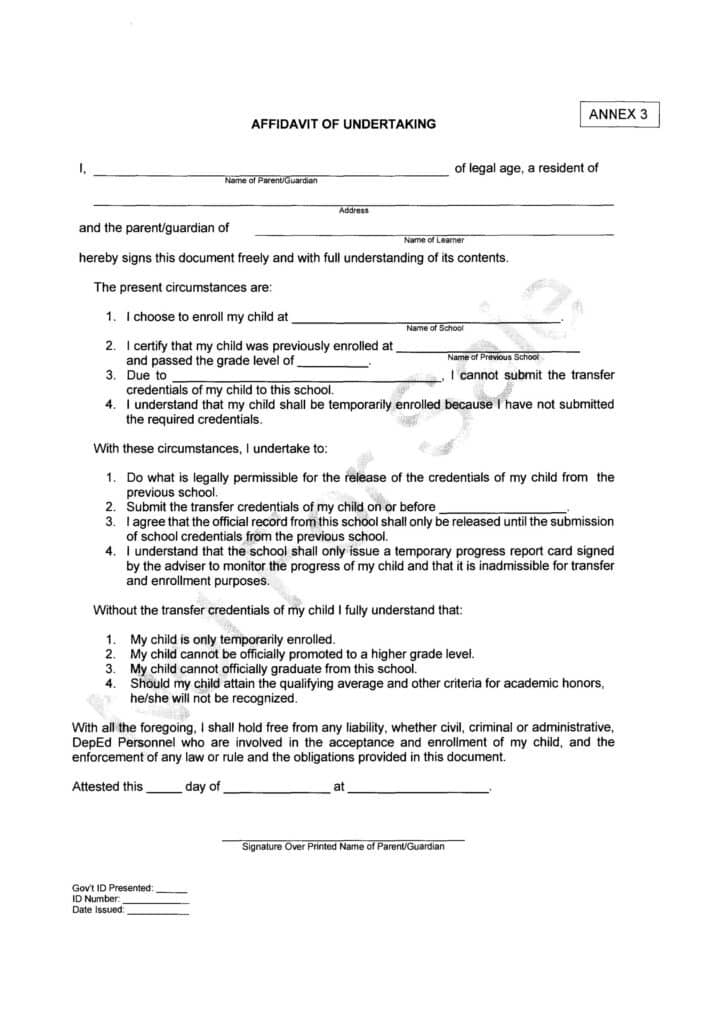
Can you share a soft copy of your enrolment form?
Hi Sir,
You may download the latest forms here: https://www.teacherph.com/deped-enhanced-basic-education-enrollment-form-sy-2022-2023/
Thank you.
Christianmingoa grade 11